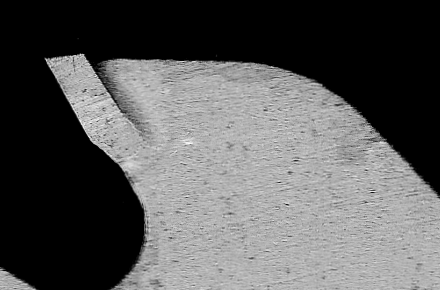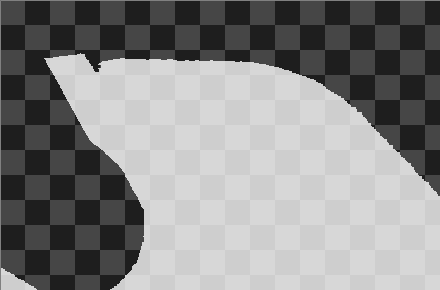Region
Description
A region is a set of pixel locations, or an optimized representation of a binary image.
Technically, a region is defined by its FrameWidth, FrameHeight and a run-length encoded list of (x, y) Location.

An image of a blade. |

The region corresponding to the object of the blade. |
Regions are typically used to identify sets of pixels corresponding to some objects within an image. This information can be used for high-level information retrieval (so called Region Analysis) or as a parameter of some further image processing operations constrained to this particular set of pixels.
Remarks
- Connected components within regions are called blobs.
- Most of image processing operations have an optional inRoi (Region of Interest) input.
- Regions can be automatically converted to images without any loss of information.
- Images can be manually converted to regions using the ThresholdToRegion filter.
- Maximum region frame dimensions are 65536 x 65536.
- Technically, the compressed representation of a region is a list of so called point-runs. A point-run consist of three 16-bit unsigned integers: X, Y and Length, and represents a horizontal sequence of consecutive pixel locations. Point-runs in a region are sorted by Y and X coordinates (in this order), are guaranteed not to overlap and not to exceed the region frame dimensions (0..FrameWidth-1, 0..FrameHeight-1). It is also not allowed to create a region with two point-runs that could be merged into a single one.

